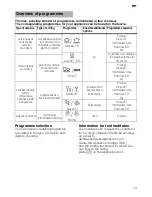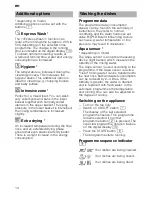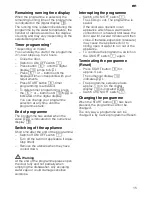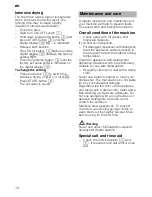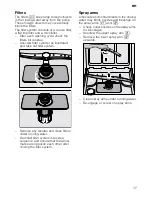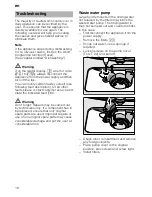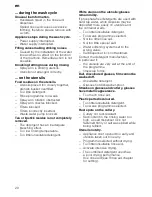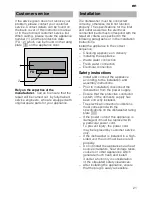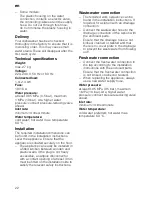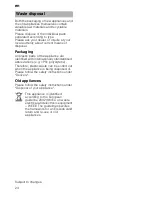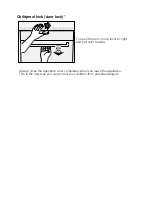
en
23
Electrical connection
–
Connect the appliance to an alternating
current only, ranging from 220 V to
240 V and 50 Hz or 60 Hz via
a correctly installed socket with
protective earth conductor. See rating
plate for required fusing
9"
.
–
The socket must be near the appliance
and freely accessible following
installation.
–
The connection may be modified by
technicians only.
–
A power cord extension may be
purchased from customer service only.
–
Use only a residual current operated
circuit-breaker which features the
symbol
‚
. Only this extension
guarantees compliance with the
currently valid regulations.
–
The appliance features a water
damage protection system. Please
note the system will not function
unless
the power supply is connected.
Removing the appliance
Also observe the sequence of worksteps
here.
–
Disconnect the appliance from the
power supply.
–
Turn off the water supply.
–
Disconnect the waste water and fresh
water connections.
–
Pull out the appliance, carefully pulling
the hose behind.
Transportation
Empty the dishwasher and secure loose
parts.
Drain the appliance according to the
following steps:
–
Turn on the tap.
–
Close the door.
–
Switch on ON/OFF switch
(
. The
displays of the last selected
programme light up.
–
Select programme with the highest
temperature.
The expected programme duration is
indicated on the numerical display
)"
.
–
Press START button
`
.
Programme sequence starts.
–
After approx. 4 minutes press the
START button
`
until
‹
:
‹‚
is
indicated on the digital display.
After approx. 1 min
‹
:
‹‹
is indicated
on the digital display .
–
Switch the appliance off
(
and turn
the tap off.
Transport appliance upright only.
(This prevents residual water from running
into the machine control and damaging
the programme sequence.)
Protection against frost
If the appliance is in a room where there is
a risk of frost (e.g. holiday home), empty
the appliance completely (see
Transportation).
–
Turn off the tap, disconnect supply
hose and drain water.





